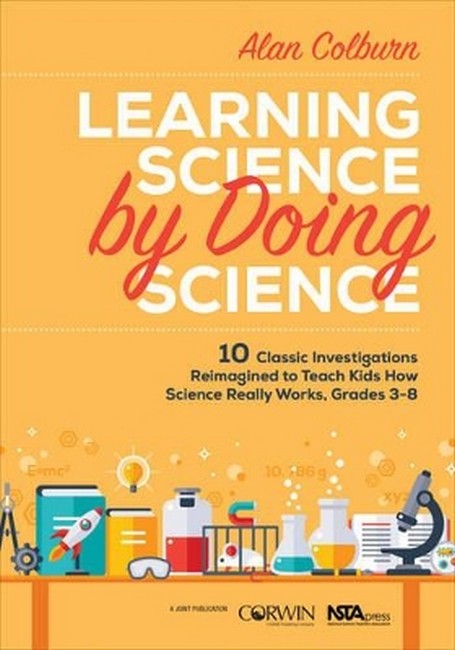Preface Acknowledgments About the Author 1. Take Us Out, Mr. Data: What's the most important thing to know about scientific knowledge? 2. Think Different: How is scientific thinking different from everyday thinking? 3. I've Got a Theory About That: How do scientists explain observations? 4. Elementary, My Dear Watson: Why is there no such thing as the scientific method? 5. I Must Be a Bit Indirect in This Chapter: Why is indirect evidence important to science? 6. Scientists Do Experiments . . .: What procedures do scientists use when answering questions? 7. We're Counting on You: What do I need to know about data? 8. Bob the Builder and You: What about engineering and NGSS? 9. Learning to Fish: Where do you go next? Appendix A. An Introduction to the Next Generation Science Standards Appendix B. Teacher to Teacher: Advice From Elementary and Middle School Colleagues Glossary References Index
Request Academic Copy
Please copy the ISBN for submitting review copy form
Description
"Now that the real work of NGSS implementation has begun, there is a high demand for quality instructional resources that show how core ideas and concepts, practices, and the nature of science come together in meaningful, intellectually engaging science investigations supported with content and pedagogical background information for the teacher. Thank you Alan Coburn for providing a resource that addresses the challenges and practical reality of transitioning to quality classroom instruction that mirrors our current best thinking about teaching and learning science." -- Page Keeley, Past-President "A lot of research points to elementary teachers not feeling comfortable with science education because they don't have strong background knowledge in science. This book provides an easy to understand method of teaching elementary students how to do science. The sample activities and implementation pointers will help novice teachers approach science education in a thoughtful manner." -- Ryan McDonnell, EdD, Assistant Principal * Animo Jackie Robinson Charter High School * "Most books of this sort concentrate on theory. This one includes practice, and well thought out and explained examples of how to get your students to meet the chapters' objectives... Elementary teachers may do little to no science teaching that doesn't involve reading the book and answering the questions. This is a 'how to' manual for hands-on, minds-on science inquiry." -- Deanna Brunlinger NBCT Science Teacher, Science Department Chair "I think this would be a great book for college classes in teacher education. Future teachers can think about this before ever beginning teaching and go into [it] with the expectation that this is how they should approach science teaching." -- Mandy Frantti, Teacher "Many science teachers are struggling when planning using the NGSS. The alignment is not evident. This book shows how to establish connections between science content and the standards (NGSS)." -- Rosario Canizales, PhD, Science Lead Teacher "The classroom practitioner's path to authentic, effective science teaching is littered with cast-off 'how-to' manuals that are too dense, too pedantic, and too variable. Not in this case. Dr. Alan Colburn builds meaningful context using familiar and accessible activities in a relatable, charmingly modest conversational tone, equipping elementary and middle school science teachers with a trifecta-a firm grounding in the key tenets of science, immediately deliverable classroom activities, and alignment to the Next Generation Science Standards." -- Jeff Weld, Ph.D., executive director Dr. Colburn has taken common activities used in classrooms and expertly retools them utilizing the three dimensions of the Next Generation Science Standards (NGSS) while modeling components of the 5E lesson design and making explicit connections to the Nature of Science (NOS). This book is a must read for new and experienced science educators and expands the connections and possibilities of familiar activities in the new NGSS context. -- David Crowther, PhD, Executive Director

